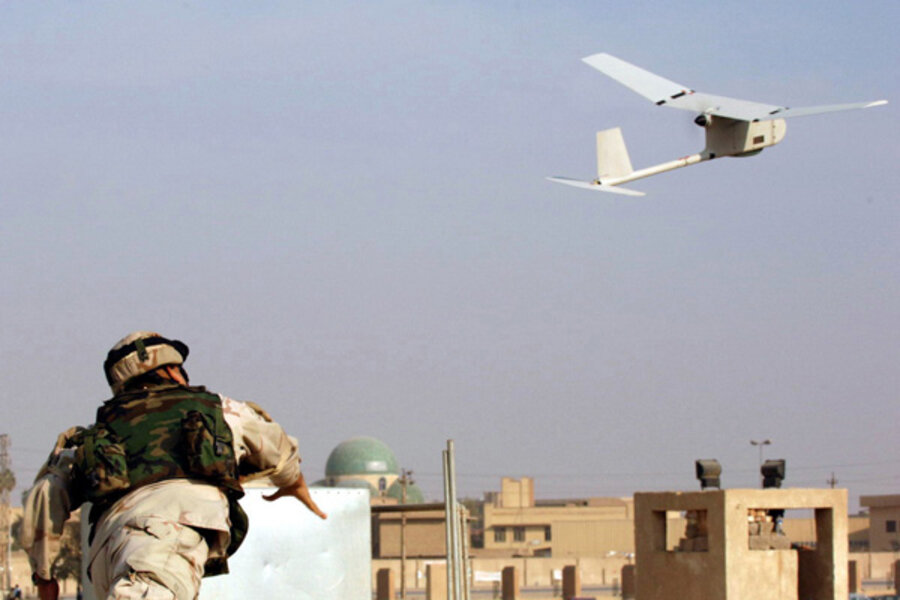Unmanned aerial vehicles give troops an airborne assist
Loading...
When launched into the air, it looks like a kid’s radio-controlled model airplane. Looks are deceiving. The RQ-11B Raven is launched by a soldier, not a kid. And it’s not a toy.
The Raven, a three-foot long, four-pound unmanned aerial vehicle (UAV) with a four-foot wingspan, is doing yeoman service for coalition warfighters in Iraq and Afghanistan, conducting reconnaissance, surveillance, target identification and battle damage assessment missions.
“People’s lives have been saved because of them,” said Steven Gitlin, VP of marketing strategy and communications for AeroVironment, the plane’s manufacturer. “They’ve been able to see the threats before the threats see them.”
IN PICTURES: Developments in robotics
Launched by hand like a model airplane, the Raven is propelled by an electric motor that gets its power from an onboard rechargeable lithium ion battery. It operates between 100 feet and 500 feet off the ground at a speed of 30-60 mph. It can stay aloft for up to 90 minutes and has a range of 6.2 miles.
What goes up eventually has to come down. The Raven returns to earth by a deep-stall landing, which involves auto-piloting to a near-hover and dropping to the ground without the need for landing gear or landing strip.
The Raven’s rather unprepossessing plain vanilla exterior belies the aircraft’s sophistication. It is equipped with cameras that provide real-time color or infrared video, sensors and communications tools and can fly day or night.
Operated by a two-person ground crew, the Raven can be controlled manually or can autonomously navigate a preplanned route using GPS waypoints. “Technically, the airplane flies itself” via computer, Gitlin told TechNewsDaily.
Neither crew member has to be a pilot; even in manual mode, user input consists of “left, right, up, down, faster, slower,” using a device that looks like a video game controller. The primary mission of the ground crew is to direct the Raven’s cameras and monitor the video it returns. Launch techniques are easily learned.
The Raven is back-packable and assembles quickly. The system was designed to be “portable, easy to put together, easy to launch and easy to operate,” said Gitlin. It is sold as a system that includes three aircraft, two ground controllers and spare parts. The price tag ranges from $100,000 to $150,000, depending on its onboard payload package. The Raven is used by all of the U.S. military services.
This pint-size performer, though, is not the smallest UAV in the military’s arsenal. That honor goes to the Raven’s stable mate, the Wasp. Like its bigger brother, the hand-launched Wasp is designed for day and night reconnaissance and surveillance and returns both full-color and infrared video. With a body a little over a foot long and a two-foot wingspan, it tips the scales at a hair under one pound.
The Wasp has a three-mile range, can stay in the air for 45 minutes and reach a speed of 40 mph. It uses the same technology as the Raven and is controlled using the same ground control. Such system interoperability, also found in the cockpits of Airbus’s family of commercial aircraft, makes it easier for operators to move from system to system.
Both the Raven and Wasp have potential border security and law enforcement application. They also could also conduct civilian missions such as monitoring power lines and other widespread physical assets. Such nonmilitary use, though, has been limited by restrictions on unmanned aerial operations in this country by the Federal Aviation Administration.
- Seven Sci-Fi Weapons from Tomorrow Are Here Today
- New Robotic Stealth Fighter Jet Set to Soar
- 10 Profound Innovations Ahead
IN PICTURES: Developments in robotics





